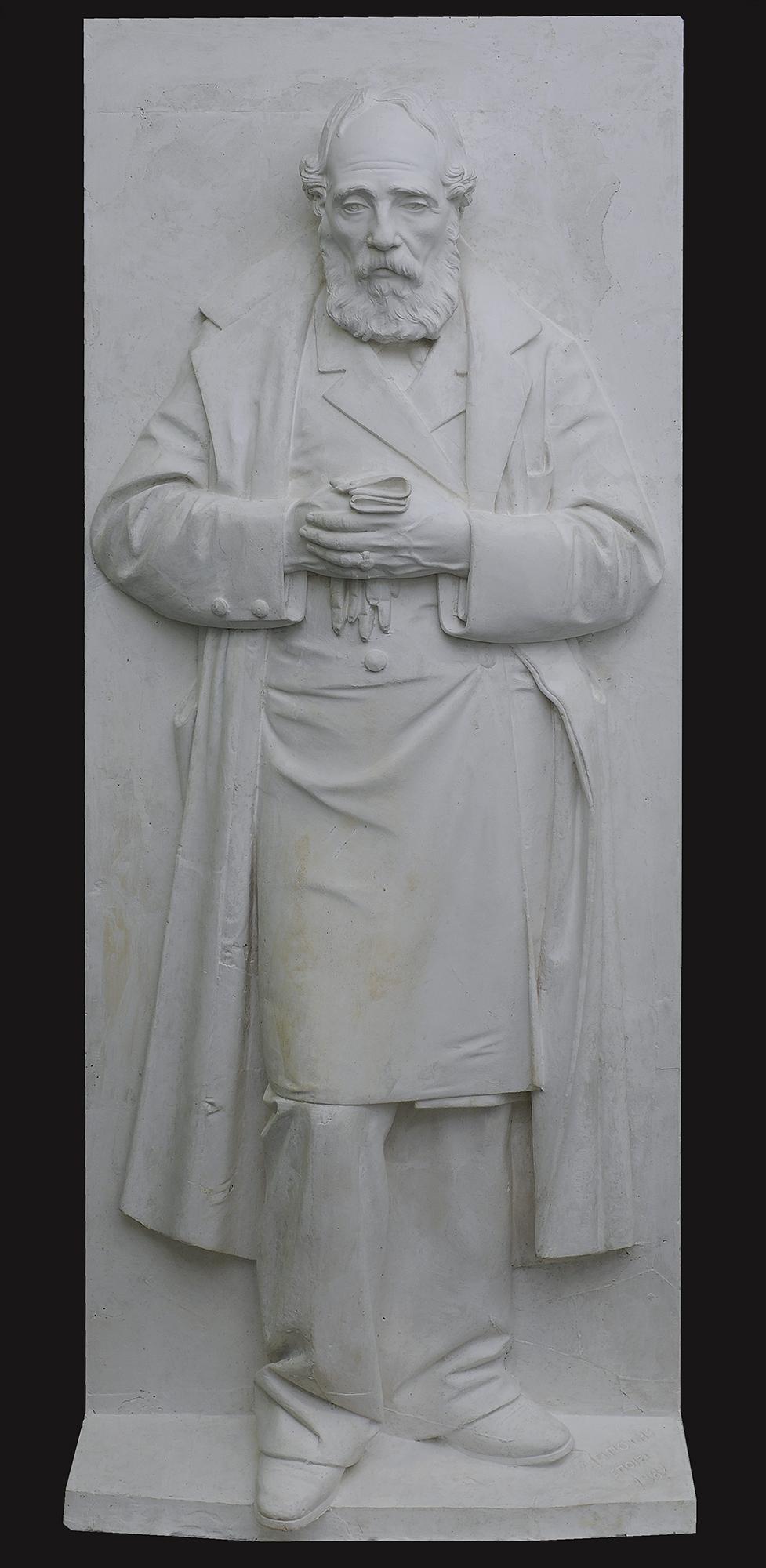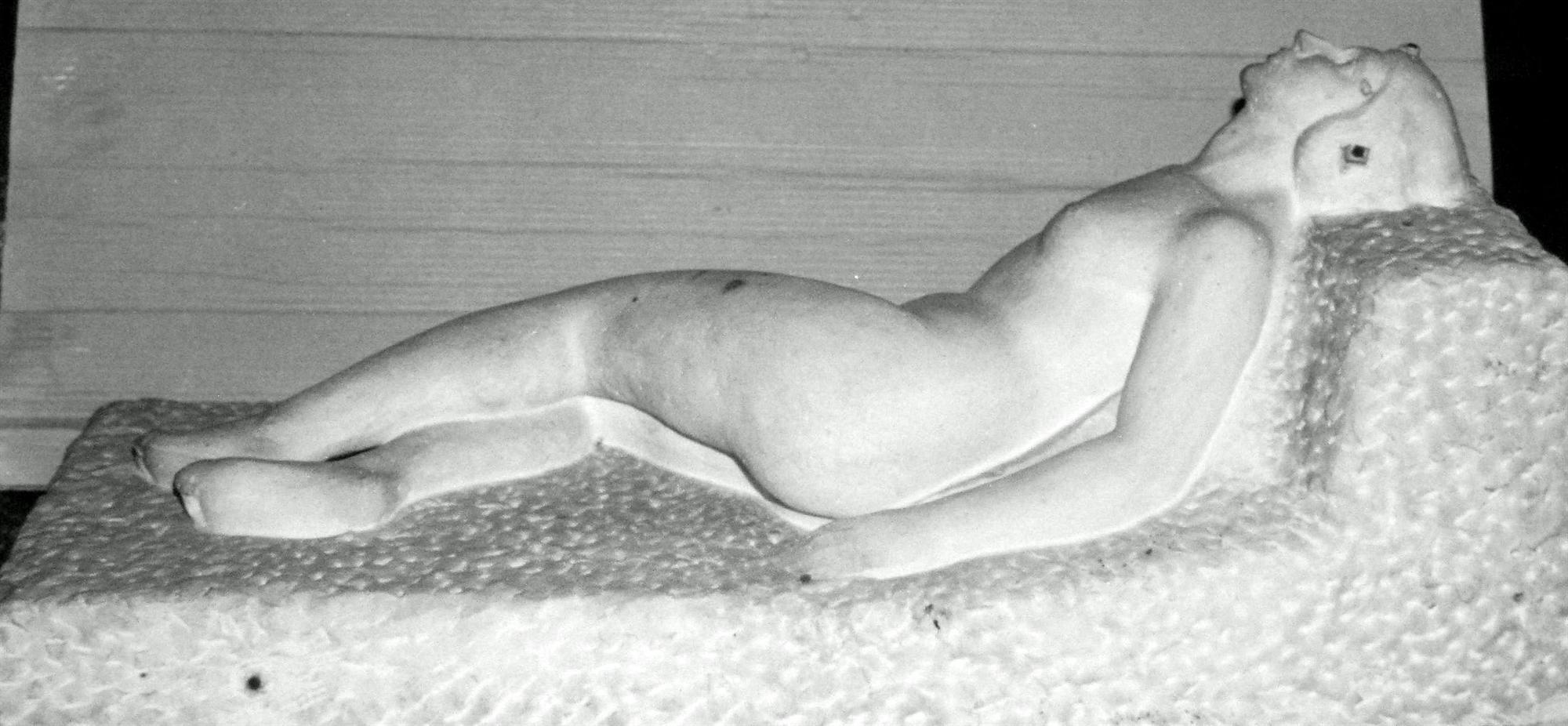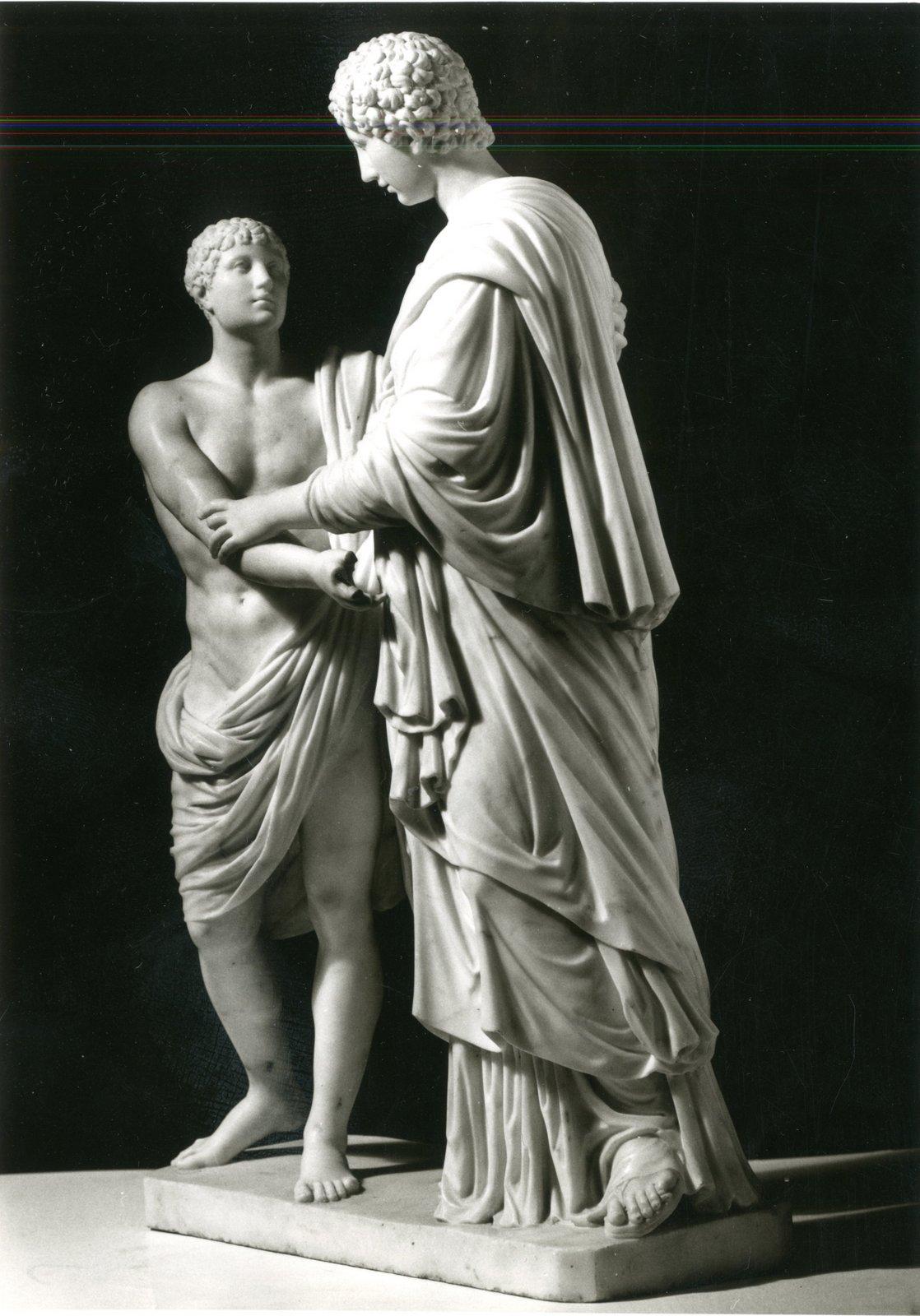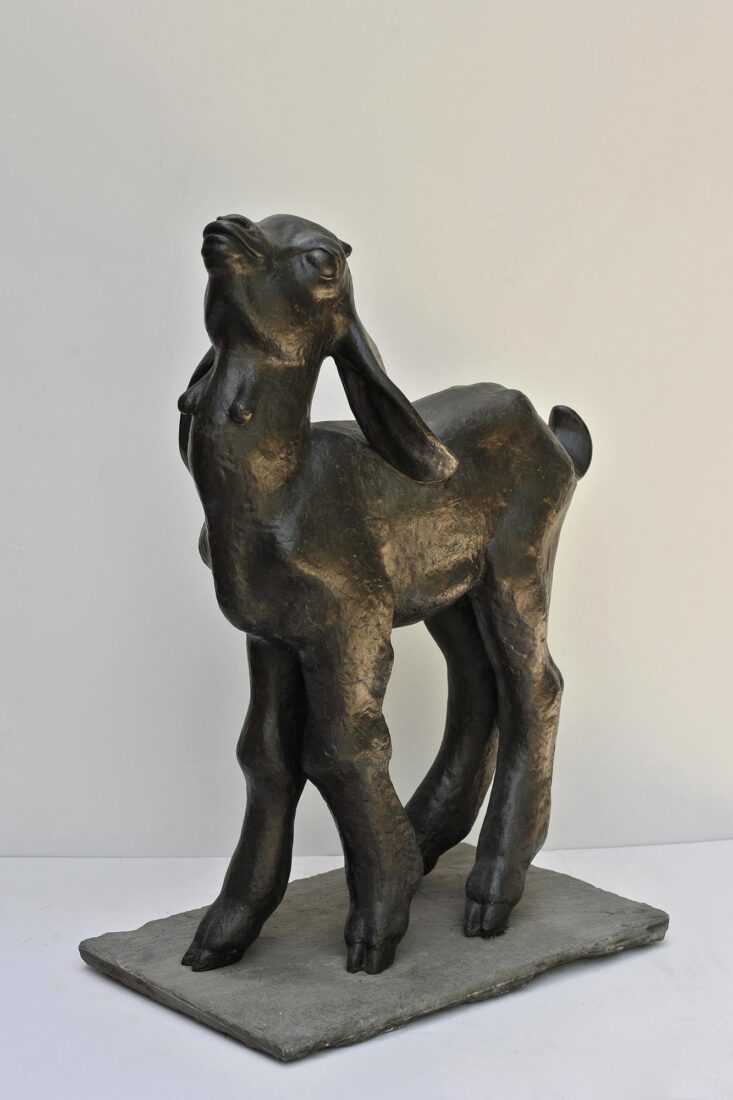

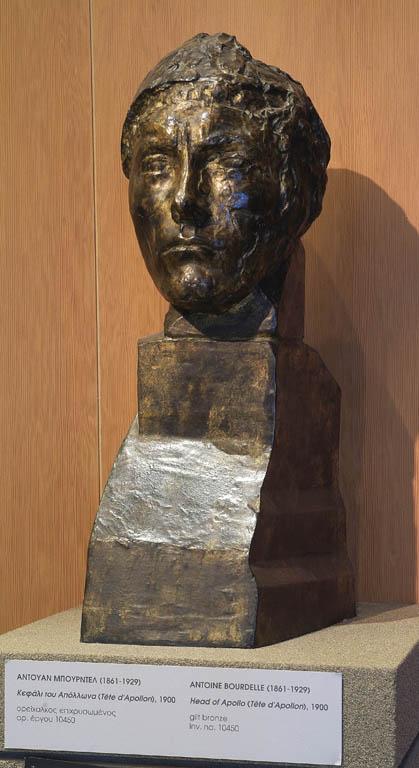
The head of the “Warrior Apollo” was a milestone in Antoine Bourdelle’s sculpture. It is the piece that marked his departure from the influence of Rodin and inaugurated his new style. Bourdelle’s personal style was formed along the guidelines of Archaic art and the austere order.
The Apollo of this composition was modeled after an Italian youth with a fiery, gaunt face, and evokes the figure of the ancient god who towers above the Battle of the Centaurs on the western pediment of the Temple of Zeus at Olympia. With this figure’s tectonic structure, sharp planes, austere expression, and powerful inner force, Bourdelle presages Cubism even as he remains faithful to Greco-Roman tradition.
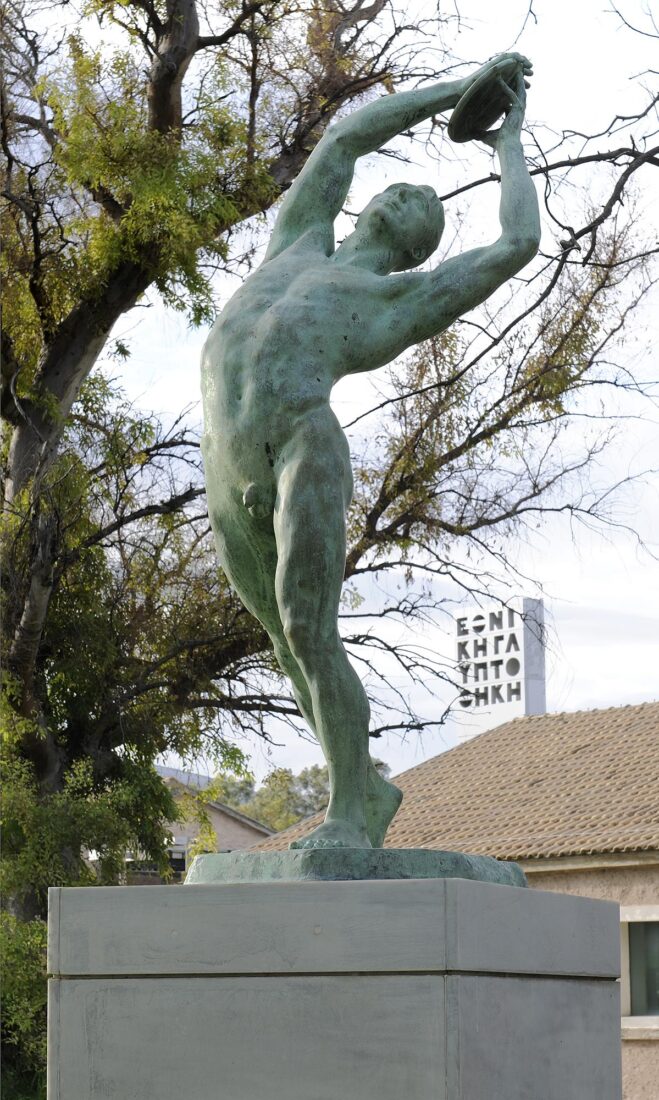
The “Discus-Thrower” is one of Dimitriadis’ mature works, one of the most characteristic of the way in which he rendered the nude male body. Made in 1924 and exhibited in Paris in the framework of the Olympic Games held there, it won the sculpture prize. The following year the entrepreneur, Euripides Kehayias, a Greek from America, bought it and gave it to the Municipality of New York City, which placed it in Central Park. Another copy was placed in the Dijon stadium in France and a third in Athens, in 1927. The copy exhibited at the National Glyptotheque was cast in 1989 from the plaster model which belongs to the National Gallery.
The dexterity of the artist in the moulding of the nude body, already evident in his earlier works, has now reached its acme. The athlete is depicted at precisely the moment before the toss, in a carefully calculated stance, while his swollen veins and his nerves, that are outlined, reveal his total concentration just before the final endeavor and place an emphasis on the momentary. The work spreads out and dynamically occupies space, while the variety of opposition displayed by the limbs, makes it possible for the composition to be viewed from all sides.
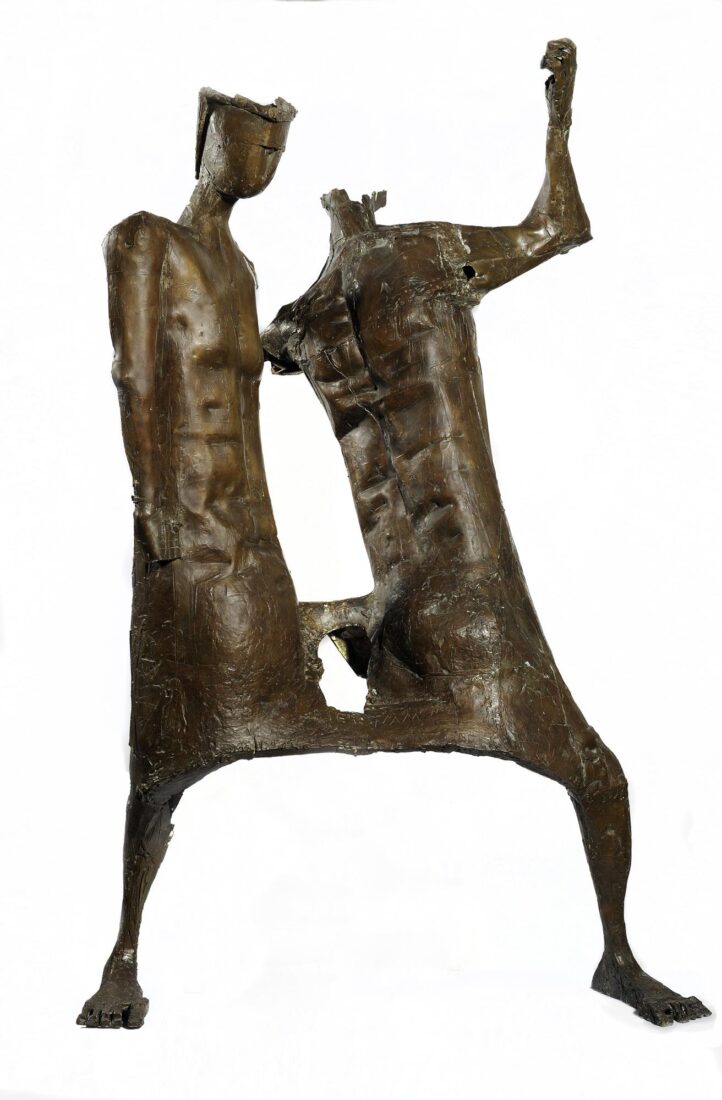
Christos Kapralos shaped his personal style by assimilating the teachings of ancient Greek and folk art together with European avant-garde tendencies.
His first sculptures were simplified realistic figures in terracotta and plaster, inspired by his immediate environment. He began using bronze in 1957. The human body became transformed into Victories and mythological figures, ancient hoplite soldiers, couples, and mothers with children. At the same time, Kapralos’ compositions became highly abstracted and often fragmented. The fragmented rendition and the intentional, exaggerated distortion gave his work its dramatic character, or emphasized that quality. In some cases this dramatic quality is immediately recognizable, whereas elsewhere it manifests itself indirectly, provoking a variety of associations in pieces that are simply titled “Composition”.
“Vietnam” is characteristic from this standpoint. It is yet anoth Composition, whose content is eloquently declared in the inscriptions engraved on the piece itself: “VIETNAM” and “DICTATORSHIP SHAME”. Kapralos thus expressed his protest against a catastrophic war and a dreadful period in recent Greek history that coincided with it chronologically. The two converging, mutilated figures support one another and, despite their tragic deformities, remain upright like symbols of hope and victory.
